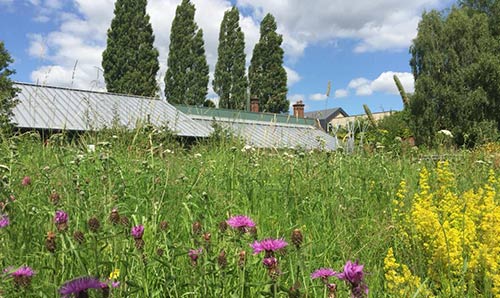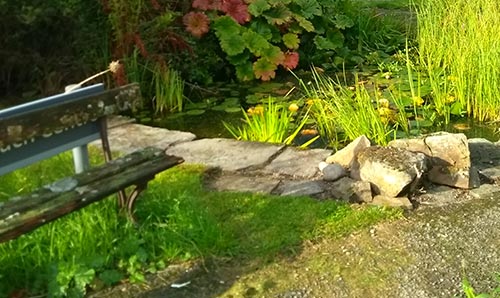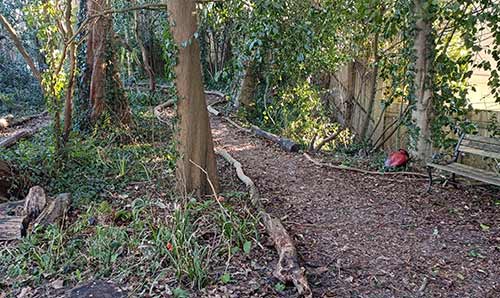
The Firs environmental research station
Situated in the heart of the University’s Fallowfield campus is a green oasis for research, teaching and community engagement.
Discover more about each of our areas of activity:
Sustainability
Situated in the heart of Fallowfield, visitors are able to connect with nature in a hidden urban oasis. We provide a range of outdoor wellbeing, teaching, outreach and research opportunities, linking to environmental sustainability and the wider Sustainable Development Goals.
We are a key part of the University’s Environmental Sustainability Strategy, helping deliver on commitments to improving biodiversity, urban green space coverage and green wellbeing outcomes, as well as integrating learning and teaching with our estate’s biodiversity.
Case studies
Hay meadow

Following the removal of an experimental plot, rather than returning to mown lawn, an area of the garden has been placed under management as a hay meadow. Starting from the natural flora, we have seeded in species from various ecology experiments and benefited from the research expertise in grasslands. Species include Yarrow (Achillea millefolium), Tufted Vetch (Vicia cracca), and Yellow Rattle (Rhinanthus minor) a parasitic plant that attaches to the roots of dominant grasses and weakens them, allowing more diversity to develop.
The pond

Constructed in the 1950s alongside a picturesque rockery, the Firs’ pond has long been a focal point of the site, with frequent monitoring and management to maintain biodiversity. In 1994, it was revitalised to address lining damage as well as adding fresh fish stocks and a water fountain. More recently, collaboration with the University’s student botany society has enabled new repairs and restoration. These have been undertaken with a focus on restoring habitats for aquatic wildlife and birds, through natural planting. A variety of native species of water plants, such as Flowering rush (Butomus umbellatus) , Water lily (Nymphaea alba), Native fern (Osmunda regalis) and Yellow flag (Iris pseudacorus) have been planted, as well as some non-natives to increase the flowering season. Additional features such as gravel shallows, boggy edges and transitional plants are included in the new design to enhance biodiversity.
Woodland garden

An overgrown area of trees and shrubs in the corner of our site has recently been open up, to allow us to plant a forest garden, including a range of native woodland species, such as bluebells (Hyacinthoides non-scripta), wood anemone (Anemonoides nemorosa), and dog’s mercury (Mercuralis perennis).
Discover more about the Firs
Read our blogs:
Find us
Get in touch with the Firs team, or come and find us in person:
Address
The Firs Environmental Research Station
The University of Manchester
Fallowfield Campus
Whitworth Lane
Manchester
M14 6HE
- E: firs@manchester.ac.uk
- T: +44 (0)161 257 2772
- University's interactive map
| Follow us on Instagram |







